Can Switzerland Continue Their Underdog Story in EURO 2024?
Switzerland has only qualified for six European Championships in the competition’s history. On the first three occasions (1996, 2004, and 2008), they left the group stage; in 2016, they advanced to the round of 16 but lost to Poland on penalties; and in 2020, they advanced to the quarterfinals but lost to Spain in a penalty shootout. They have already equaled their best finish, but a win against England would see them make history and beat a nation with nearly 60 million more people.
Murat Yakin has won the hearts of fans across Europe with exciting football and shock results, most recently a win against the holders of the European Championships, Italy. They also held Germany to a 1-1 draw in the group stage, only conceding in the 92nd minute to a Niclas Füllkrug equaliser. They will not be beaten easily, but what makes them so impressive?
How Do Switzerland Play?
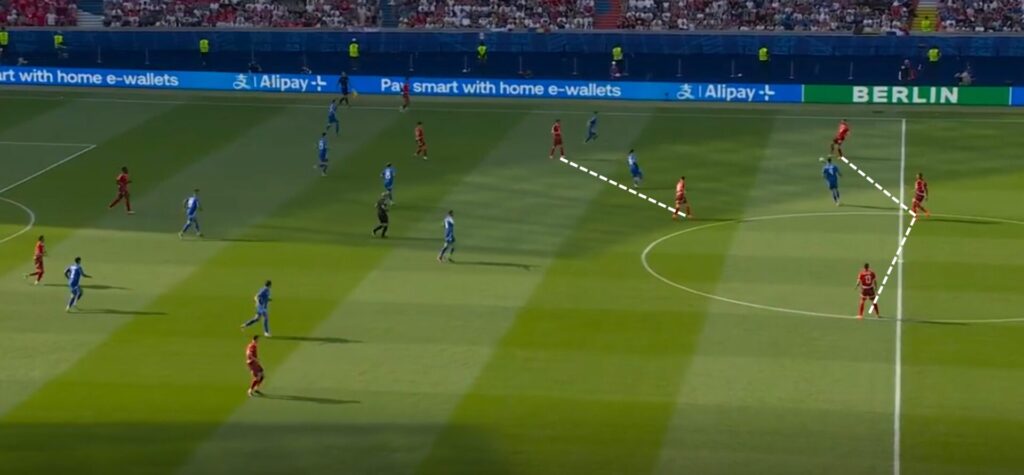
Switzerland set up in a back-three formation with two deeper midfielders just ahead, forming a 3-2 build-up shape. Great managers and teams, including Manchester City, Arsenal, Barcelona, and others, use this shape all over Europe. Manuel Akanji is usually in the centre of the three because he has the ability to step up into midfield, either on or off the ball, or cover the space behind him and his other centre-backs because of his speed.
On either side of him are Fabian Schar and Ricardo Rodríguez. The experienced duo form a solid back three that is the foundation for Switzerland’s success. The midfield duo of Xhaka and Freuler have also been very impressive; they dictate play while in possession and are as good without the ball.
These five players often pass between each other while reshaping and disorganizing the opposition press until a clear pass or space is found. Sometimes they carry into the space ahead and draw players in, or they can appear to stutter on the ball while deliberately creating a pressing trap and baiting the opposition—similar to De Zerbi’s defenders placing their studs on the ball.
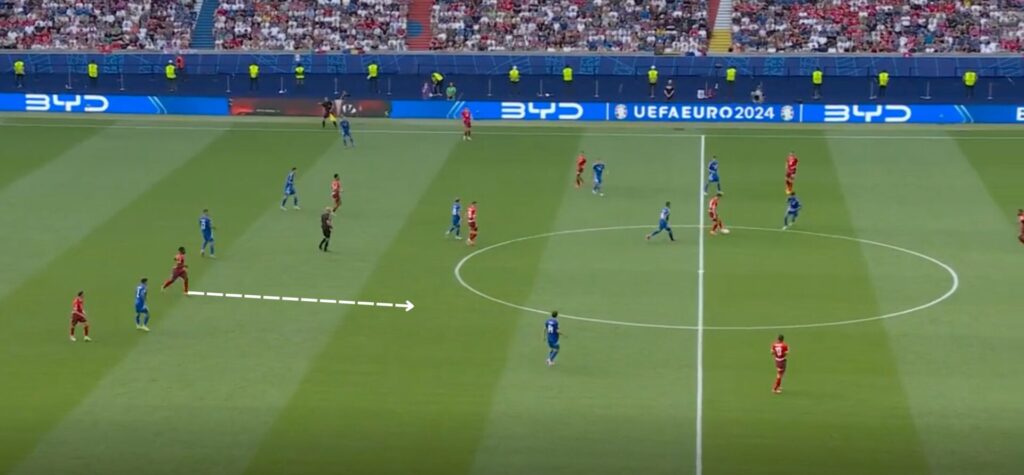
Another way Switzerland likes to create space is by having two attacking midfielders/wingers push onto the defensive line, leaving space for the striker (Embolo) to drop into. The centre-backs are hesitant to follow and the midfielders rarely pick him up. This gives Switzerland a direct pass through two lines of play (attack and midfield). Embolo is a physical striker and can hold off defenders, giving him time to turn or play a pass, like in the screenshot above. While this is not a new tactic, it is one that is rarely used and therefore not expected by most opposition, meaning it is usually very successful.
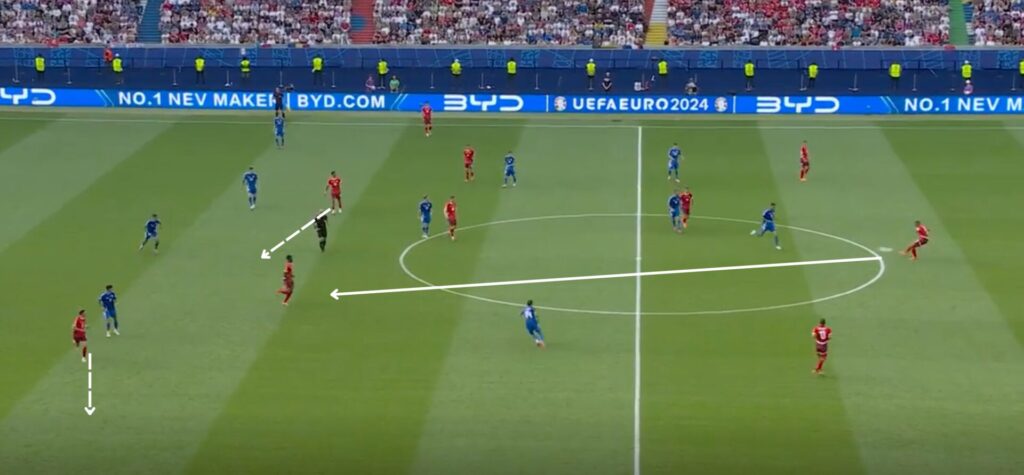
Akanji is able to play a pass directly into Embolo, who is in space and unmarked. In this case, the pass wasn’t good but the time he has allows him to deal with it and play it into the right-sided attacking midfielder, who is already moving towards play. He turns and Switzerland go on to score because they took so many players out of the game with one pass; this can be replicated against opponents who lack a good pressing structure, for example, England.
Excellent build-up play is only one aspect of why Switzerland are succeeding, another is their threat on the counter attack.
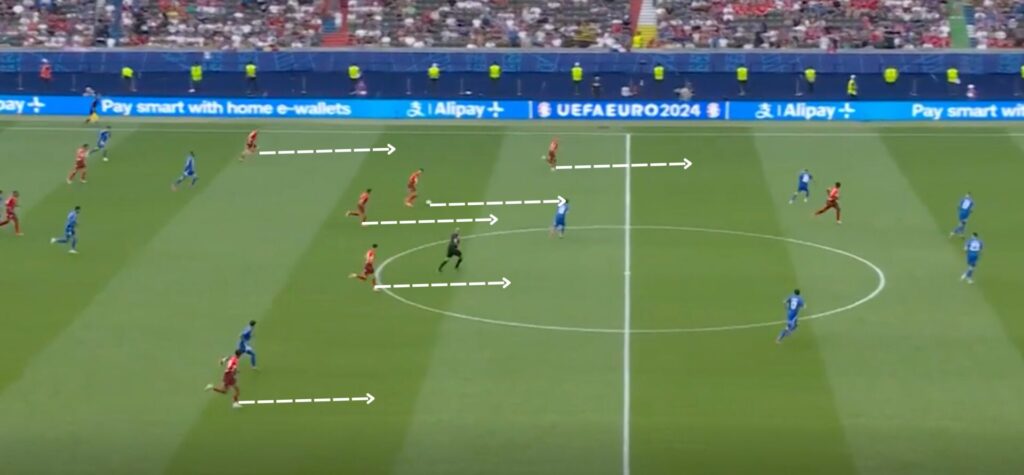
This is directly before the second goal, just after kick-off, and Switzerland immediately win the ball after a poor pass from Italy. They then commit everybody apart from the centre-backs because they see they can massively overload the opposition. This is a high-risk, high-reward approach that is not normally seen in a knockout competition. Xhaka drives forward with the ball to take another Italy player out of the game, therefore leaving a four vs. seven in Switzerland’s favour.
Switzerland uses a positional play approach where players hold the width in an attempt to create space in the middle (half spaces and central areas). However, they also have the features of a relationism team because they look to create overloads when they can, which can involve players moving out of position.
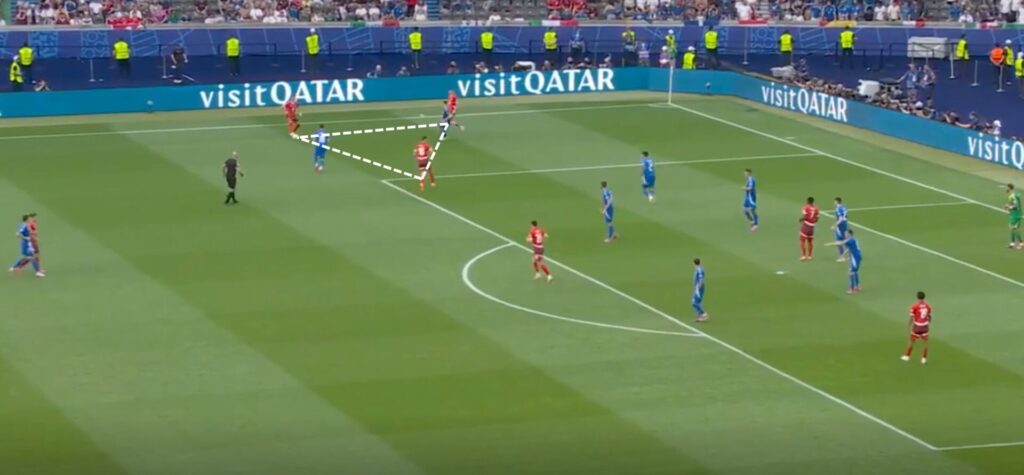
As can be seen above, Switzerland likes to form a triangle on the wing, and this is simple but incredibly effective. Ruben Vargas plays it inside to Granit Xhaka, bypassing the Italy defender, and makes a run past his marker. Xhaka has time to turn and plays it back to Vargas, who scores a curled finish into the far corner. While this may appear like just a screamer, it is great play from Switzerland and comes from their tactical setup. However, Switzerland can be beaten if the opposition is set up in the right way, but how?
How Should England Play to Beat Switzerland?
It has been reported that England could potentially move to a back five against Switzerland and match their formation themselves. This would see England lineup with three central defenders, two wing-backs, a midfielder, and a front three. However, to expose Switzerland, they should play a midfield three and two strikers because they haven’t faced this yet this, and it would allow Southgate to get more of his star players in. This is the team England should play.
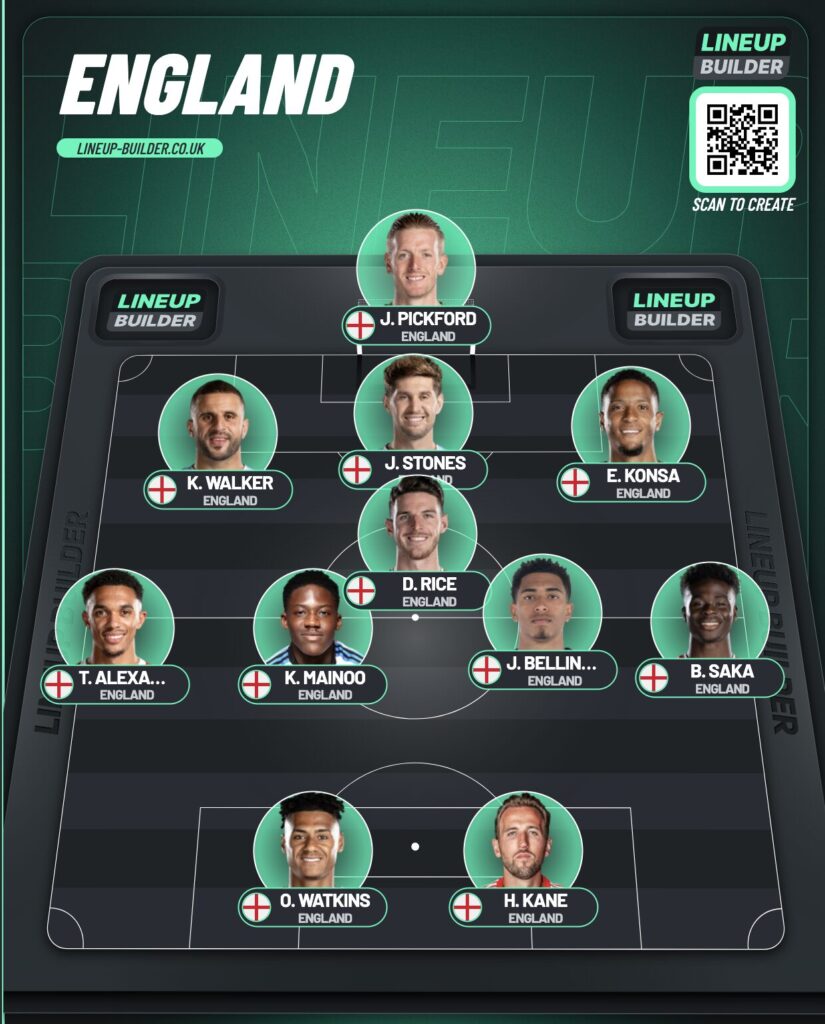
This team would give England a new dynamic and the option to drop back into a back four in several ways (Saka or Trent dropping back). This formation also means that Switzerland can be exposed on the counterattack like they were against Scotland; England not only have pace up front but players who can find them with a through ball.
The Scotland goal was scored when Switzerland had committed the majority of the team to an attack and Scotland were able to get forward and expose their defence. A midfield trio of Mainoo, Bellingham, and Rice would see England have a solid rest defence because one could go forward and join the counterattack while the others sit in a 3-2 shape.
The only defender in the Switzerland back three with recovery pace is Manuel Akanji, which leaves space behind Schar and Rodríguez that Watkins would be able to exploit. He is the only natural striker in the squad with raw speed. Anthony Gordon could be tried up front but it is an unnecessary risk when Watkins is proven at the highest level.
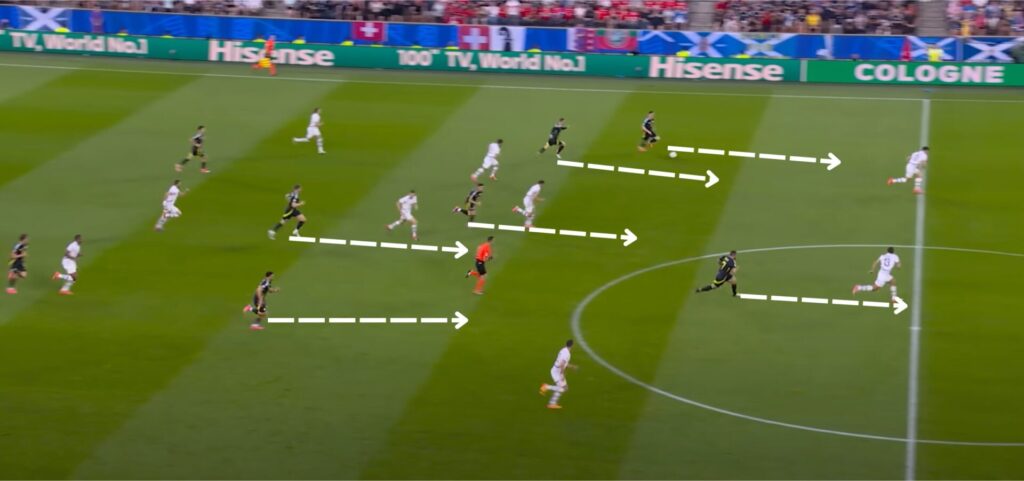
The above screenshot is just seconds before Scotland’s goal against Switzerland and you can see they commit too many players to an attack. They will also do this against England if given the opportunity so England should invite Switzerland up the pitch and look to exploit the space left on the counter.
Switzerland has a great opportunity to make history for their country if they can beat England, but can they do it? The Three Lions aren’t in the best of form, so there is a real possibility they can go through.


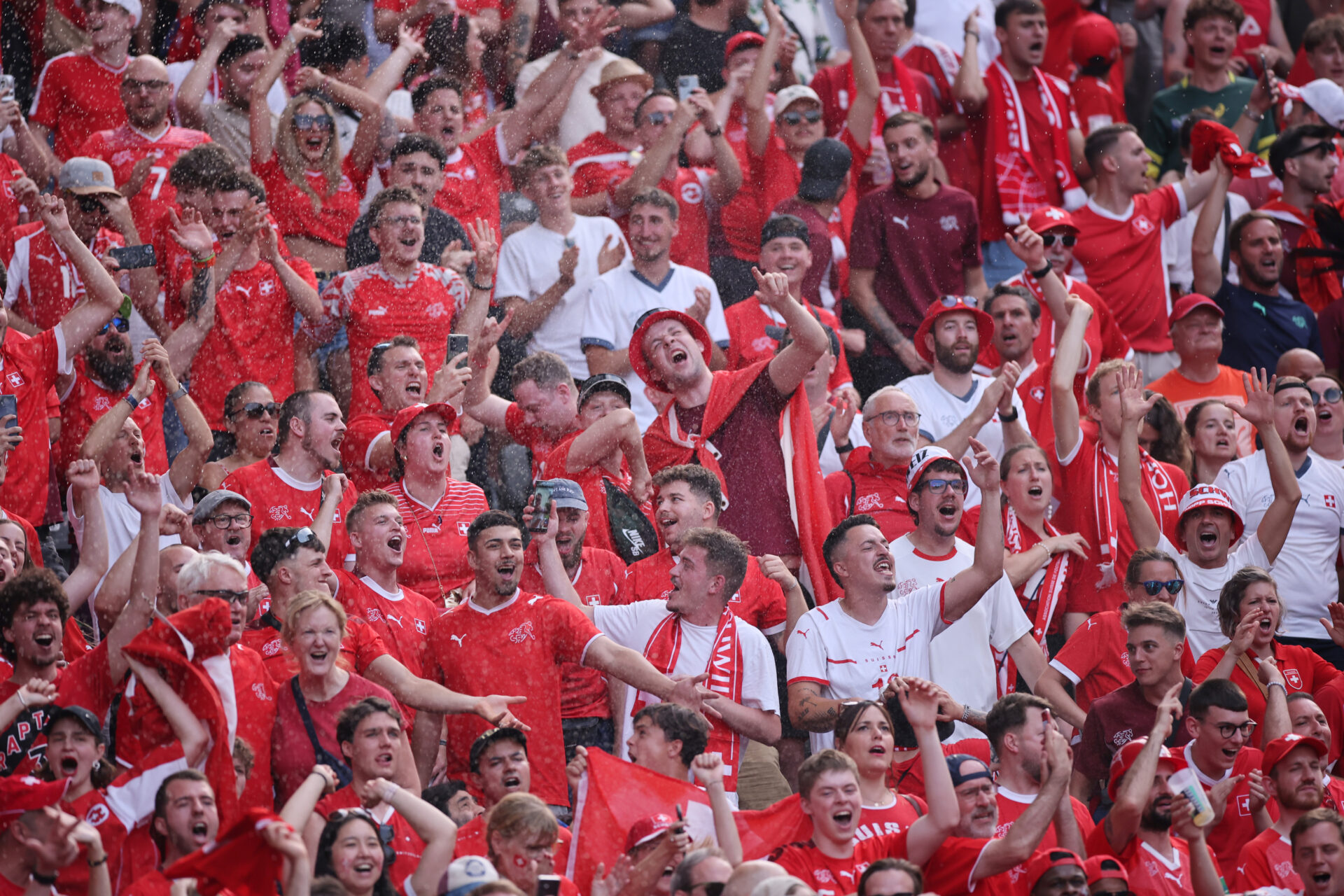






One Comment